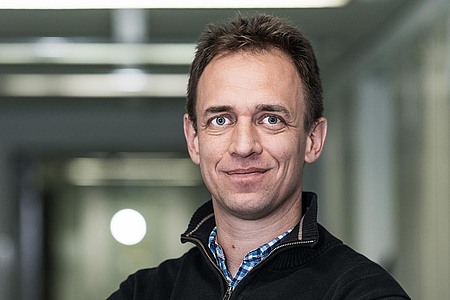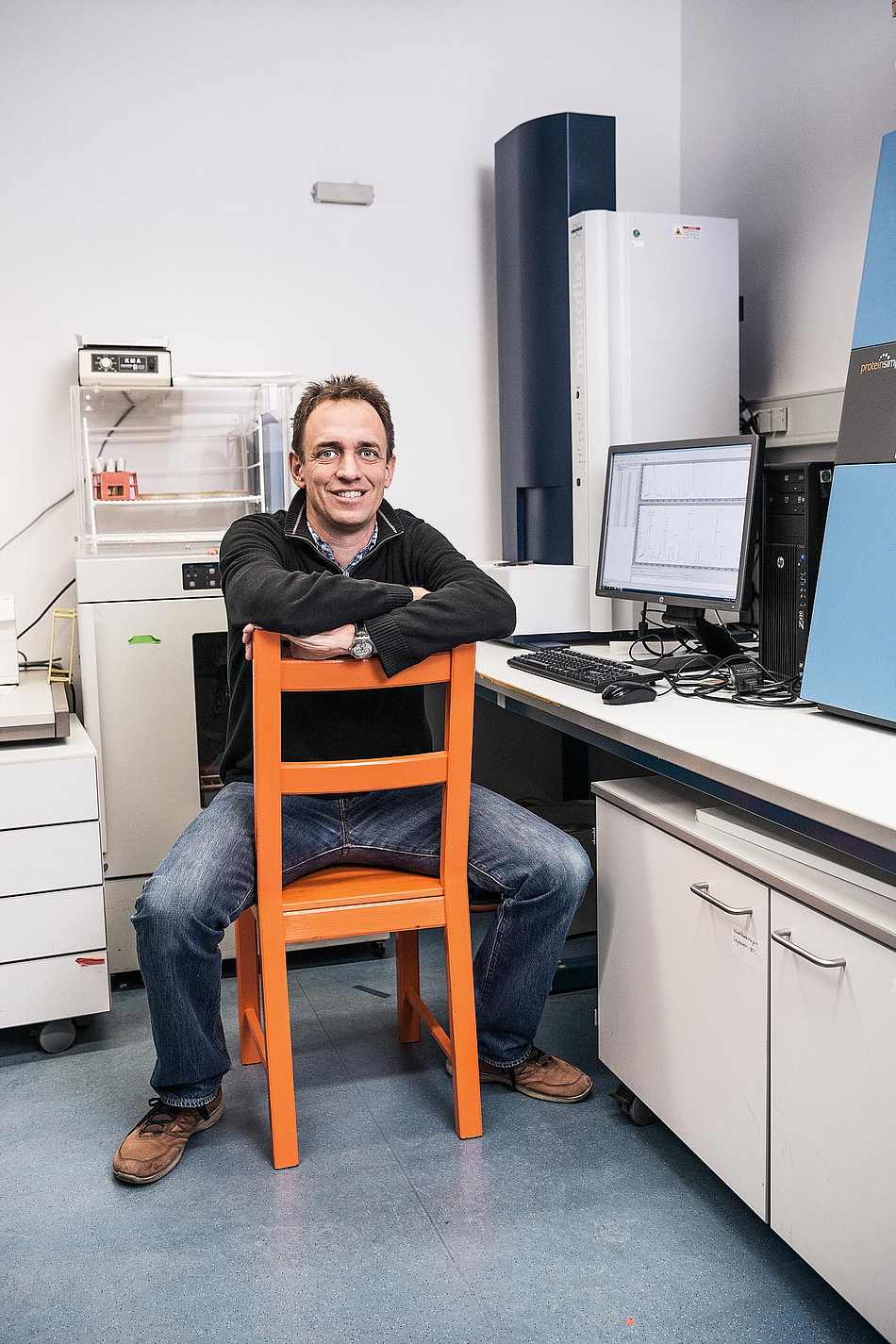The molecular engines of the human body
When one looks at the subjects of top research or the Nobel Prizes for Medicine and Chemistry awarded over the past few years, it quickly becomes obvious that a great deal of this plays out at the molecular level. Oliver Daumke researches proteins and explained in an interview why we should look at the molecules more closely – and how that’s even possible.
Professor Daumke, what is the purpose of looking at proteins?
Proteins perform the most important tasks in the cell. They are supporting scaffolds, small machines, receptors – most of the processes in our cells are carried out by proteins. To understand how a cell or how our whole body works, you have to understand how proteins function.
So, in fact, the aim is to understand diseases?
We’re interested in the basic mechanisms in the cell. Many diseases are caused because these mechanisms – that is, ultimately the proteins – aren’t working any more. The focus of our research is to fathom those processes. For example, the commonest form of congenital blindness, optic atrophy, is caused by a mutation in OPA1, a protein we’re studying at the moment.
What precisely are you researching?
The cell is shielded from the environment by a membrane, as if by a liquid skin. Small pieces are repeatedly pinched off from the membrane and transported into the cell, due to which substances such as iron are absorbed into the cell. We’re studying this absorption mechanism and the proteins responsible for it. In addition, we carry out research into the mitochondria, the power plants of the cell. They too are surrounded by a membrane and have to be constantly reshaped to perform their task. In that process too, proteins are necessary.
How exactly do you look at the proteins?
Proteins consist of a chain of amino acids. Depending on how those chains are folded, the proteins can take on very different forms and functions. Until recently, our main method was X-ray structure analysis. In that process, you crystallize the protein that’s of interest and then shoot X-rays at the crystal. This gives you a scatter image, based on which we can calculate the structure of the protein on the computer. Meanwhile, there’s a new method that doesn’t need the crystal – cryogenic electron microscopy. In 2017, Jacques Dubochet, Joachim Frank and Richard Henderson received the Nobel Prize for developing it. You shoot an electron beam at the individual molecule and thus obtain an image of its structure. Then, based on that structure, we try to find out what function the protein has and what mechanism it uses.
What do you find particularly interesting about this field?
Motor proteins that carry out work in the cell interest us. They bind a type of cellular fuel molecule, move around and thereby use the fuel molecule – like a little engine. I’m fascinated by the way such molecular machines function. They’re much smaller than the wavelengths of visible light and therefore we can never make them visible in detail under a light-optical microscope.

Funding program
BIH Investment Fund
Funding period
2015
Project title
Rapid analysis of peptide and protein masses for biomedical research with a Bruker microflex MALDI-TOF
Research areas
Structural biology, biochemistry, cellular biology
Institution
Max Delbrück Center for Molecular Medicine (MDC)
Since 2013
Principle Investigator, Max Delbrück Center for Molecular Medicine, Professor of Structural Biology, Free University of Berlin
2007 – 2013
Independent Helmholtz Young Investigator, Max Delbrück Center for Molecular Medicine, Berlin
2005 – 2007
Post-Doc at the Laboratory of Molecular Biology in Cambridge (Harvey McMahon), UK
It is impressive how much nature has invented in order to produce such machines. When you research the basic principles of the cell, you learn more about how nature works.
Who or what has been the strongest influence on your career?
I studied in Freiburg and then went to England at the University of Sussex in Brighton. There, one works in small groups and we had very intensive discussions – British people love discussing things. The fact that we simply enjoyed discussing the scientific work made a deep impression on me. In terms of content, the doctoral thesis influenced me the most. At that time, I worked for three years on a project that wasn’t making any progress – it was a frustrating time. But one should never give up hope and in the end the project did work out after all.
When you retire and look back on your life, what would you like to have achieved?
We’ve already achieved some progress in the area of the structural biology of motor proteins. In future, we want to look more closely at how proteins whose functions we know from the test tube actually function in the cell. The methods that make that possible have undergone massive further development over the past few years, and we want to be part of that development.
November 2017 / TO and MM
